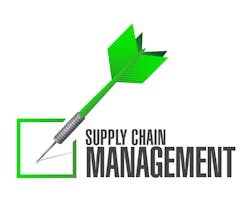Supply chain management: Why use a GPO versus a traditional dental dealer?
As we continue our series on the preservation of the independent dental practitioner, we look at operational competency in terms of supply chain management. Here we look at using a group purchasing organization (GPO) or "buying group" versus a traditional dental supply dealer.
When we consider how we obtain dental supplies for our practices, we tend to think of either traditional "full-service" dealers or "mail order" distributors as the two primary sources. As business owners, however, we need to think outside the box in order to maintain the long-term financial health of our practices and maintain our independence. For example, group purchasing organizations (GPOs) are one novel way to manage our supply chains. To understand why GPOs are an exceedingly smart choice, we need to first understand the dental supply industry as a whole.
The dental supply industry in the United States is a $7 billion market that serves approximately 191,000 practitioners.1 Given the size of the market, there is more than enough room for competition between companies. The two largest supply companies, Henry Schein Dental and Patterson Dental, are "traditional" distributors, and they control approximately two-thirds of the supply market.2
The avenues for dental supply procurement can be classified into these types:
• Direct sales companies—These companies manufacture specific lines of products and sell them directly to practitioners. While "direct" distributors, such as Garrison Dental, Komet USA, Kettenbach USA, and Ultradent Products, provide great lines of specific products, they cannot by themselves provide the full breadth of products necessary for a dental practice to operate.
• Traditional full-service supply companies—These "brick-and-mortar" companies are established and well-known. They stock over 40,000 SKUs. They distribute products made by a variety of manufacturers. They provide equipment sales and service through regional branches. Their field service representatives have a group of clients, and representatives call on offices via a traditional sales model.
• Mail-order distributors—These are similar to traditional full-service supply companies, but they reside as call centers in various parts of the country. These distributors have representatives who handle specific accounts, but they do not physically call on their clients. These companies tend to offer more limited equipment lines and normally do not provide equipment service.
• Fulfillment houses—These companies take orders from practitioners and try to source the items from various channels. These groups have been known to carry "gray market" items.
• Group purchasing organizations (GPOs)—GPOs bring practitioners together and leverage their buying power to negotiate savings on products and supplies.
Clinical procedures have changed over time, and it seems obvious that there also should be changes in how supplies are acquired. In my opinion, the emergence of GPOs is the biggest change that we have seen in the business of acquiring dental supplies. Why should a practice use a GPO, and how can GPOs help preserve the independent dental practitioner? The simple answer is cost containment and savings.
ADDITIONAL READING: 7 reasons the supply percentage is too high in your dental practice
My partners and I started a GPO, Synergy Dental Partners, six years ago. We started it to level the playing field for independent dental practitioners. Today, we allow practitioners to achieve similar pricing as that of large corporate practice groups, i.e., 20% to 60% savings on items.
Managing Synergy has taught my partners and me many things about the supply industry. We initially took our concept to the top three supply companies. We pitched them on helping keep the independent practitioner viable. We were surprised that none of them were interested in participating. As we examined the market, we discovered that Darby Dental Supply shared our commitment to the independent dental practitioner. Synergy and Darby worked to establish cost-saving opportunities for our members that allowed them to control overhead and cash flow without changing their practice models or having to increase practice revenue. The Synergy-Darby Dental agreement gave us the foundation we needed to provide savings for our members.
Today, we also work with select manufacturers to provide specific savings opportunities that cannot be achieved through other channels. While our mission has always been to provide savings on everyday supplies, we are now working with manufacturers to provide enhanced discounts on product lines through a "Synergy-preferred brand." Our GPO can use this arrangement to offer up to 50% savings on name-brand items. This type of unprecedented savings is not readily available through many other distributors.
While savings on consumable supplies is a big piece of what GPOs such as Synergy offer, there are other opportunities that GPOs present that further differentiate them. Most GPOs have enhanced platforms that offer savings on lab services, office supplies, orthodontics, implants, and practice consulting.
Supply savings can have a meaningful impact on a practice's profitability. Let's look at some examples.
• If 6% of your practice's overhead is supplies, and if you have a $1 million practice, then that 6% equals $60,000 in annual supply purchases. By using the most beneficial supply-savings method, you can save 20% on supplies. A 20% savings on $60,000 results in $12,000 of annual savings.
• Let's extrapolate this to lab savings. In my experience, a typical general practice spends 12% to 13% annually on lab services. If this is applied to the $1 million practice, annual lab expenses are $120,000 to $130,000. Through a GPO, you can save 20% on lab expenses, which is an additional $24,000.
• Using the examples here, the aggregate of lab and supply savings results in your practice achieving $36,000 in annual savings. If this amount were invested and compounded annually using a 6% interest rate, a 10-year analysis would show a benefit of $502,979 to the practice (see table 1).
Table 1: Annual cost savings based on 20% discount for lab and supply costs for a $1 million practice.
Savings are invested with a compound interest rate of 6%.
Like everything in dentistry, the supply industry is diverse. As practice owners, we have to examine which supply avenue partnerships are best for our practices and help us to best preserve our independent dental practices.
References
1. United States Securities and Exchange Commission Form 10-K, Patterson Companies Inc. Annual report for fiscal year ended April 25, 2015. Page 4. http://files.shareholder.com/downloads/AMDA-1HGAMJ/1681599295x0x849706/550D7A18-AF64-47A2-A893-538E7A33E260/FY15_10-K.PDF. Accessed March 15, 2015.
2. Henry Schein Dental Q4 Report. Page 9. http://www.henryschein.com/us-en/images/Corporate/IRPresentation.pdf. Accessed March 15, 2016.
Mustafa Shah-Khan, DDS, is a graduate of the University of North Carolina School of Dentistry, where he served on the board of directors for the Dental Alumni Association. He is CEO and founder of Synergy Dental Partners, and maintains a private practice emphasizing cosmetic reconstructive dentistry in Charlotte, North Carolina. He can be reached at [email protected].

